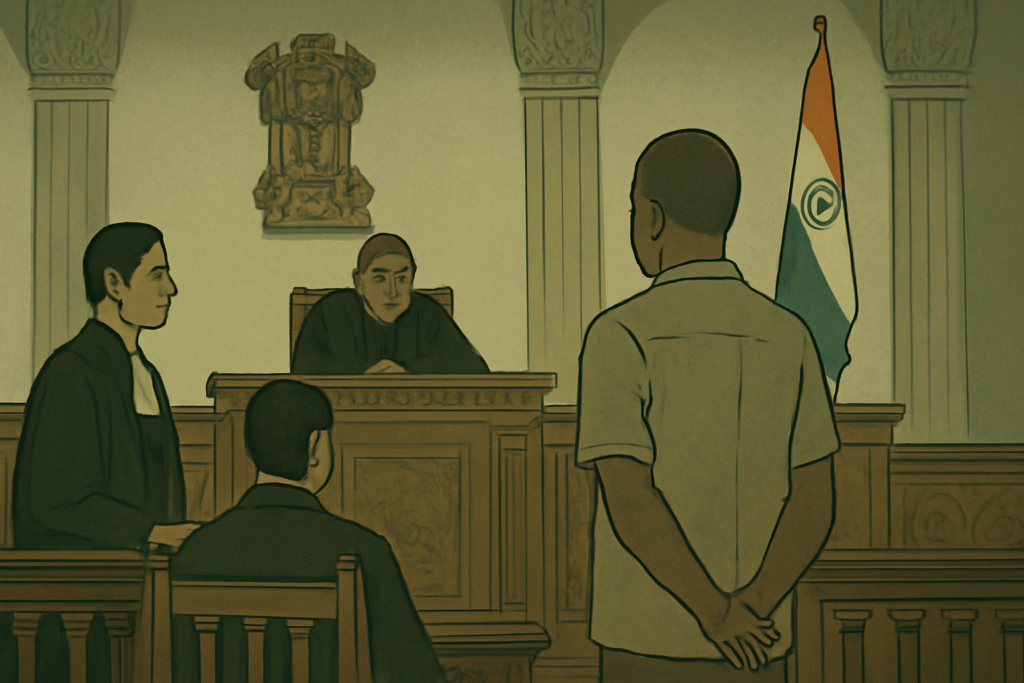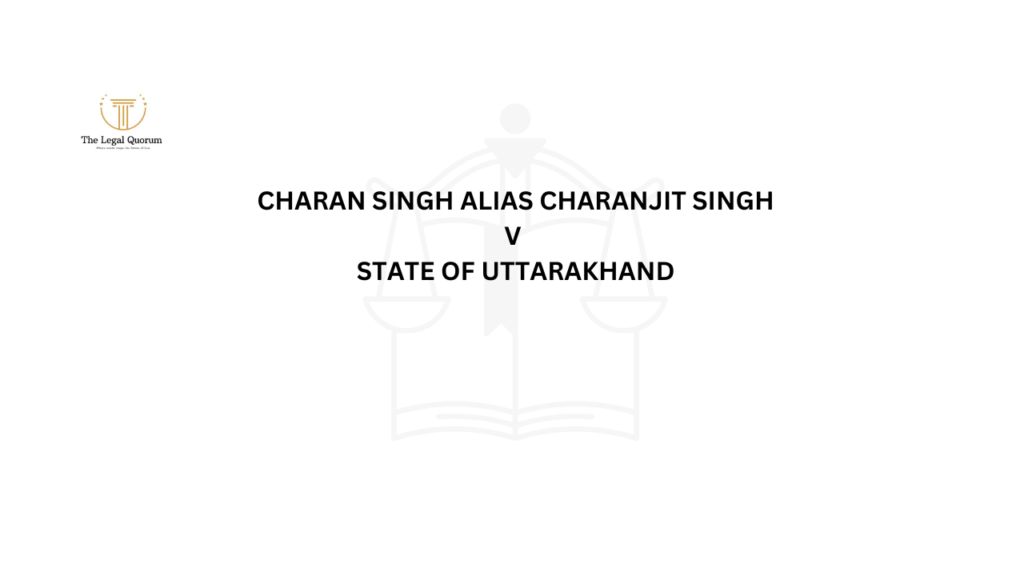Published On: 8th August 2025
Authored By: Shewit Hadgu Assefa
Raya University
ABSTRACT
The intersection of international human rights law (IHRL) and international humanitarian law (IHL) is crucial in understanding the legal frameworks that govern conduct during armed conflicts. This article explores the complexities of their interplay, highlighting the challenges that arise from their coexistence and the opportunities for enhancing legal protections for individuals affected by war. By analyzing key principles, relevant case law, and evolving practices, this study aims to provide a comprehensive understanding of how IHRL and IHL can complement each other in safeguarding human rights during conflicts. Furthermore, it proposes potential reforms to address existing gaps and improve accountability mechanisms, ensuring that the protection of human dignity remains at the forefront of legal considerations in armed conflicts.
Keywords: International Human Rights Law (IHRL), International Humanitarian Law (IHL), armed conflicts, human rights, accountability, reforms, protection, human dignity.
INTRODUCTION
The nature of warfare has undergone significant transformation over the past few decades, resulting in a complex legal landscape where international human rights law (IHRL) and international humanitarian law (IHL) intersect in both complementary and conflicting ways.[1] IHL is specifically designed to regulate the conduct of hostilities and protect those who are not participating in the conflict, such as civilians and medical personnel.[2] In contrast, IHRL seeks to uphold the fundamental rights and freedoms of all individuals, applicable in both peacetime and during armed conflicts.[3]
Understanding the interplay between these two bodies of law is essential, not only for legal scholars and practitioners but also for policymakers and humanitarian organizations. This article aims to explore the challenges and opportunities presented by the relationship between IHRL and IHL, examining how they can together provide effective protections for individuals in situations of armed conflict.
THE FRAMEWORKS OF IHRL AND IHL
International Human Rights Law (IHRL)
IHRL encompasses a broad array of legal norms aimed at protecting the rights and dignity of individuals.[4] Key international treaties, such as the International Covenant on Civil and Political Rights (ICCPR) and the Convention on the Rights of the Child (CRC), establish a framework for the protection of human rights. These treaties outline fundamental rights such as the right to life, freedom from torture, and the right to a fair trial, which are applicable at all times, including during armed conflict.[5]
IHRL operates on the principle that human rights are inalienable and must be respected and protected by states, regardless of the context.[6] However, during armed conflicts, states may seek to derogate from certain rights under exceptional circumstances, raising questions about the extent to which such derogations are permissible and the safeguards in place to prevent abuse.[7]
International Humanitarian Law (IHL)
IHL, on the other hand, is specifically tailored to situations of armed conflict. The Geneva Conventions and their Additional Protocols form the cornerstone of IHL, establishing rules that govern the conduct of hostilities and provide protections for individuals who are not participating in the conflict.[8] IHL is rooted in the principles of humanity, distinction, proportionality, and necessity, aiming to minimize suffering and protect those who are vulnerable.[9]
IHL provides a legal framework that explicitly acknowledges the realities of warfare, allowing for certain actions that may not align with the principles of IHRL.[10] For example, IHL permits the use of force under specific circumstances, which can lead to tensions when IHRL standards are invoked.
THE INTERPLAY BETWEEN IHRL AND IHL
Both complementarity and tension can characterize the relationship between IHRL and IHL.[11] While IHL sets forth specific protections during armed conflict,[12] IHRL continues to apply and can enhance the protection of rights for individuals affected by warfare.[13]
Complementarity
Both IHRL and IHL share a common goal: the protection of human dignity. This complementarity is evident in several key areas:
- Prohibition of Torture and Inhumane Treatment:[14] Both IHRL and IHL categorically prohibit torture and cruel, inhuman, or degrading treatment. This shared commitment reinforces the importance of protecting individuals from such abuses during armed conflict.
- Protection of Civilians:[15] IHL explicitly aims to protect civilians from the effects of hostilities, while IHRL provides a broader set of rights applicable to all individuals, regardless of their status. This overlap ensures that civilians are afforded comprehensive protections in times of war.
Tension
Despite their complementarity, tensions can arise between IHRL and IHL, particularly regarding the scope of rights and the legal obligations of states:
- Derogation of Rights:[16] IHL permits certain derogations from rights that IHRL guarantees, leading to potential conflicts. For instance, during military operations, states may justify actions that infringe on the right to life, raising questions about the legality and morality of such actions.
- Different Standards of Protection: The standards of protection under IHL may not always align with those provided by IHRL.[17] For example, IHL may allow for the targeting of military objectives that could result in civilian casualties, whereas IHRL emphasizes the right to life in a broader context.
- Jurisdictional Issues: The application of IHRL in armed conflict can create jurisdictional challenges, particularly when states claim that they are operating under IHL.[18] This complicates the enforcement of human rights standards and accountability for violations.
CHALLENGES IN THE INTERPLAY OF IHRL AND IHL
Legal Ambiguities
One of the primary challenges in the interplay between IHRL and IHL is the legal ambiguities surrounding the application of rights during armed conflict.[19] The question of whether states can derogate from specific human rights obligations during warfare remains contentious. This uncertainty can hinder efforts to hold violators accountable for human rights abuses and complicate the legal landscape for humanitarian organizations operating in conflict zones.[20]
Enforcement Mechanisms
The enforcement of rights under both frameworks presents another significant challenge.[21] While IHL has established mechanisms for accountability, such as international tribunals and courts, the enforcement of IHRL often relies on domestic legal systems, which may be inadequate, especially in conflict-affected areas. This disparity can create a climate of impunity for those responsible for human rights violations during armed conflict.
Evolving Nature of Warfare
The changing nature of warfare, particularly with the rise of non-state actors and asymmetric warfare, complicates the application of both IHRL and IHL.[22] Traditional legal frameworks may struggle to address the complexities of modern conflicts, necessitating a reevaluation of existing norms. Non-state actors often operate outside the established legal frameworks, leading to challenges in applying both IHRL and IHL effectively.[23]
OPPORTUNITIES FOR HARMONIZATION AND REFORM
Promoting Complementarity
There is significant potential to promote greater complementarity between IHRL and IHL through legal reforms and enhanced collaboration.[24] This can involve integrating human rights considerations into IHL training and practice, ensuring that humanitarian principles are upheld in armed conflict.
Strengthening Accountability Mechanisms
Enhancing accountability mechanisms for violations of both IHRL and IHL is crucial for improving protections for individuals affected by armed conflict. This may involve strengthening international accountability bodies, such as the International Criminal Court (ICC), and encouraging states to adopt domestic legislation that facilitates the prosecution of war crimes and human rights abuses.
Engaging Non-State Actors
Recognizing the role of non-state actors in modern warfare presents both challenges and opportunities. Engaging these actors in discussions about human rights and humanitarian principles can foster a culture of accountability and respect for the rule of law.[25] Efforts to include non-state actors in peace negotiations and post-conflict reconstruction can also promote adherence to IHL and respect for human rights.
International Collaboration
International collaboration is essential for addressing the challenges posed by the interplay of IHRL and IHL. States, international organizations, and civil society must work together to develop harmonized standards and best practices for the protection of human rights during armed conflict.[26] Initiatives such as the International Committee of the Red Cross (ICRC) and various UN bodies can play pivotal roles in facilitating dialogue and cooperation.
CASE STUDIES
The Syrian Conflict
The Syrian conflict exemplifies the profound challenges arising from the interplay between international human rights law (IHRL) and international humanitarian law (IHL).[27] Since the outbreak of civil war in 2011, the country has witnessed widespread human rights abuses, including torture, extrajudicial killings, and brutal attacks on civilians.[28] Numerous reports from organizations such as Amnesty International document these atrocities, highlighting the severe impact on vulnerable populations. While IHL aims to protect individuals not participating in hostilities, its effectiveness has been severely undermined by the lack of accountability mechanisms. This culture of impunity has allowed perpetrators to operate without fear of consequences, perpetuating further violations and suffering.[29]
International bodies, including the United Nations, have sought to investigate these abuses and hold those responsible accountable, yet their efforts are complicated by the ongoing nature of the conflict and geopolitical tensions. The UN Commission of Inquiry on Syria has meticulously documented violations but has faced significant challenges in enforcing accountability due to political deadlocks within the Security Council. As humanitarian conditions worsen, with civilians lacking access to essential services, the necessity for stronger mechanisms that integrate IHRL and IHL becomes increasingly urgent. Ensuring justice for victims and deterring future violations require a committed international response that prioritizes human rights, even amidst the complexities of armed conflict.
The Ethiopian-Tigray Conflict
The conflict in Ethiopia’s Tigray region exemplifies the critical interplay between international human rights law (IHRL) and international humanitarian law (IHL).[30] Since the conflict erupted in late 2020, reports have documented numerous human rights violations, including extrajudicial killings, sexual violence, and widespread displacement of civilians.[31] Both the Ethiopian government and the Tigray People’s Liberation Front (TPLF) have faced allegations of committing atrocities against non-combatants, raising serious concerns about the protection of human rights amidst armed conflict.[32] The humanitarian crisis has been exacerbated by blockades and restrictions that have hindered access to essential aid, further endangering vulnerable populations.[33]
In response to these alarming reports, the international community has called for thorough investigations into the violations, emphasizing the need to apply both IHRL and IHL principles to ensure accountability for those responsible. The situation in Tigray highlights the urgent necessity of integrating human rights protections into humanitarian responses to armed conflict. By reinforcing the legal obligations of all parties involved, the international community can better advocate for the rights and dignity of affected individuals. This integration is vital not only for providing immediate relief but also for fostering a long-term commitment to justice and accountability in the region. Without such efforts, the cycle of violence and impunity is likely to persist, further undermining the prospects for peace and stability in Ethiopia.
The Ukraine Conflict
The ongoing conflict in Ukraine exemplifies the intricate challenges at the intersection of international human rights law (IHRL) and international humanitarian law (IHL).[34] Since Russia annexed Crimea in 2014 and the subsequent hostilities in Eastern Ukraine, numerous reports have surfaced detailing serious human rights abuses committed against civilians.[35] Indiscriminate shelling and the deliberate targeting of civilian infrastructure have raised significant concerns regarding compliance with IHL, which mandates the protection of non-combatants and civilian property during armed conflict.
Additionally, the Ukrainian government has imposed restrictions on certain freedoms, citing national security concerns.[36] This situation highlights the delicate balance that must be struck between ensuring the security of the state and protecting the human rights of individuals. The international community has responded with calls for adherence to both IHL and IHRL, emphasizing the necessity for accountability for violations and the imperative to safeguard civilians caught in the crossfire. The Ukraine conflict underscores the urgent need for robust mechanisms to effectively address human rights violations while navigating the complexities inherent in armed conflict, ensuring that the principles of justice and human dignity are upheld amidst the chaos of war.
CONCLUSION
The interplay between international human rights law and international humanitarian law in warfare presents both challenges and opportunities. While tensions exist, particularly regarding the application of rights during armed conflict, there is significant potential for harmonization and reform. By promoting complementarity, strengthening accountability mechanisms, engaging non-state actors, and fostering international collaboration, legal frameworks governing warfare can evolve to better protect human dignity.
As the nature of warfare continues to change, it is imperative that legal scholars, practitioners, and policymakers work together to ensure that both IHRL and IHL are effectively integrated to safeguard human rights in times of conflict. The protection of individuals affected by armed conflict must remain a priority, and ongoing efforts to clarify and reform the legal frameworks are essential to achieving this goal.
REFERENCES
Laws
- Additional Protocol I to the Geneva Conventions, art. 48, June 8, 1977, 1125 U.N.T.S. 3.
- Convention Against Torture and Other Cruel, Inhuman or Degrading Treatment or Punishment, arts. 1-2, Dec. 10, 1984, 1465 U.N.T.S. 85.
- Geneva Conventions of 1949, 75 U.N.T.S. 31.
- Geneva Conventions of 1949, art. 4, 75 U.N.T.S. 31.
- International Covenant on Civil and Political Rights, arts. 2(1), 4, 6, 14, Dec. 16, 1966, 999 U.N.T.S. 171.
Books
- Dinah Shelton, The Relationship Between Human Rights and Humanitarian Law: A Perspective, 94 Am. J. Int’l L. 1 (2000).
- Thomas Buergenthal, International Human Rights in a Nutshell 3 (4th ed. 2017).
Articles and Journals
- D. S. M. Schmitt, Non-State Actors and the Law of Armed Conflict, 57 Va. J. Int’l L. 1 (2017).
- E. M. de Brabandere, The Relationship Between International Humanitarian Law and International Human Rights Law: A Comparative Perspective (2017).
- Michael N. Schmitt, The Impact of Emerging Technologies on the Law of Armed Conflict, 94 Int’l L. Stud. 161 (2018).
Reports
- Human Rights Committee, General Comment No. 29: Derogations during a State of Emergency, U.N. Doc. CCPR/C/21/Rev.1/Add.11 (Aug. 31, 2001).
- International Committee of the Red Cross, Customary International Humanitarian Law: Volume I: Rules 15, 18 (Jean-Marie Henckaerts & Louise Doswald-Beck eds., 2005).
- International Crisis Group, Building a Culture of Accountability in Armed Conflict (2020).
- Office of the United Nations High Commissioner for Human Rights, The Human Rights of People in Armed Conflict (2009); Human Rights in Armed Conflict (2018); Report on the Human Rights Situation in Ukraine (2023).
- United Nations, Report of the International Commission of Human Rights Experts on Ethiopia (2022).
- United Nations, The Rule of Law and Transitional Justice in Conflict and Post-Conflict Societies, U.N. Doc. S/2004/616 (Aug. 23, 2004).
- A. S. & M. R., Human Rights Abuses in Crimea and Eastern Ukraine: A Report (2021).
[1] Dinah Shelton, The Relationship Between Human Rights and Humanitarian Law: A Perspective, 94 Am. J. Int’l L. 1 (2000).
[2] Additional Protocol I to the Geneva Conventions, art. 48, June 8, 1977, 1125 U.N.T.S. 3.
[3] Human Rights Committee, General Comment No. 36: Article 6 (Right to Life), U.N. Doc. CCPR/C/GC/36 (Oct. 30, 2018).
[4] Thomas Buergenthal, International Human Rights in a Nutshell 3 (4th ed. 2017).
[5] International Covenant on Civil and Political Rights, art. 6,14, Dec. 16, 1966, 999 U.N.T.S. 171.
[6] United Nations, The Rule of Law and Transitional Justice in Conflict and Post-Conflict Societies, U.N. Doc. S/2004/616 (Aug. 23, 2004).
[7] Human Rights Committee, General Comment No. 29: Derogations during a State of Emergency, U.N. Doc. CCPR/C/21/Rev.1/Add.11 (Aug. 31, 2001).
[8] Geneva Conventions of 1949, 75 U.N.T.S. 31, and Additional Protocol I to the Geneva Conventions, June 8, 1977, 1125 U.N.T.S. 3.
[9] International Committee of the Red Cross, Customary International Humanitarian Law: Volume I: Rules 18 (Jean-Marie Henckaerts & Louise Doswald-Beck eds., 2005).
[10] Ibid
[11] Human Rights Committee, General Comment No. 36: Article 6 – Right to Life, U.N. Doc. CCPR/C/GC/36 (Oct. 30, 2018).
[12] Geneva Conventions of 1949, 75 U.N.T.S. 31.
[13] Office of the United Nations High Commissioner for Human Rights, The Human Rights of People in Armed Conflict (2009).
[14] Convention Against Torture and Other Cruel, Inhuman or Degrading Treatment or Punishment, arts. 1-2, Dec. 10, 1984, 1465 U.N.T.S. 85.
[15] Geneva Conventions of 1949, art. 4, 75 U.N.T.S. 31.
[16] International Covenant on Civil and Political Rights, art. 4, Dec. 16, 1966, 999 U.N.T.S. 171.
[17] International Humanitarian Law, Geneva Conventions of 1949, art. 3, 75 U.N.T.S. 31.
[18] International Covenant on Civil and Political Rights, art. 2(1), Dec. 16, 1966, 999 U.N.T.S. 171.
[19] International Committee of the Red Cross, Customary International Humanitarian Law: Volume I: Rules 15 (Jean-Marie Henckaerts & Louise Doswald-Beck eds., 2005).
[20] Office of the United Nations High Commissioner for Human Rights, Human Rights in Armed Conflict (2018).
[21] R. S. Lee, Human Rights in Armed Conflict: The Role of International Law (2020).
[22] Michael N. Schmitt, The Impact of Emerging Technologies on the Law of Armed Conflict, 94 Int’l L. Stud. 161 (2018).
[23] D. S. M. Schmitt, Non-State Actors and the Law of Armed Conflict, 57 Va. J. Int’l L. 1 (2017).
[24] E. M. de Brabandere, The Relationship Between International Humanitarian Law and International Human Rights Law: A Comparative Perspective (2017).
[25] International Crisis Group, Building a Culture of Accountability in Armed Conflict (2020).
[26] United Nations, The Role of International Organizations in Promoting Human Rights in Armed Conflict (2021).
[27] International Committee of the Red Cross, The Syrian Conflict: A Humanitarian Crisis (2019).
[28] Ibid.
[29] United Nations Human Rights Council, Report of the Independent International Commission of Inquiry on the Syrian Arab Republic (2021).
[30] Human Rights Watch, “War on Tigray”: Human Rights Violations and Violations of Humanitarian Law (2022).
[31] United Nations, Report of the International Commission of Human Rights Experts on Ethiopia (2022).
[32] J. P. & A. T., Atrocities in Tigray: Accountability and Human Rights Violations (2022).
[33] Ibid.
[34] Office of the United Nations High Commissioner for Human Rights, Report on the Human Rights Situation in Ukraine (2023).
[35] A. S. & M. R., Human Rights Abuses in Crimea and Eastern Ukraine: A Report (2021).
[36] M. K. & T. B., National Security and Human Rights in Ukraine: Balancing Act or Overreach? (2022).




